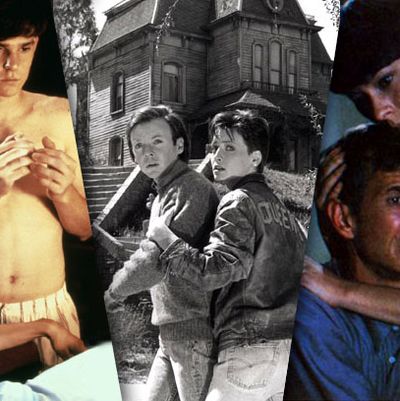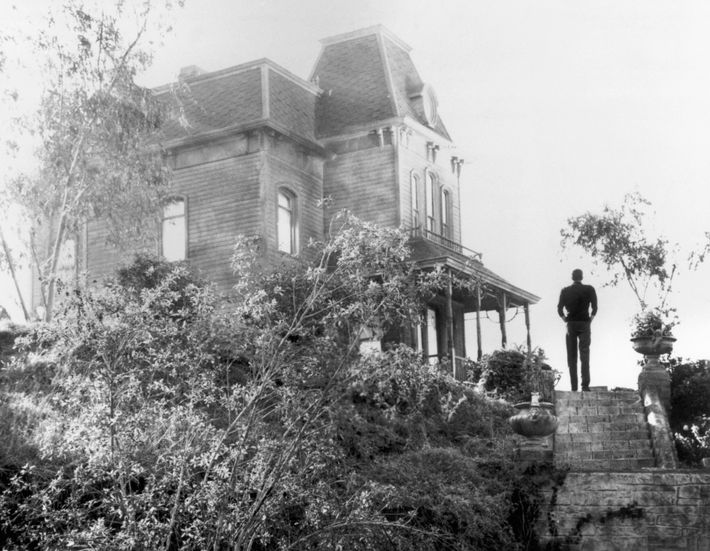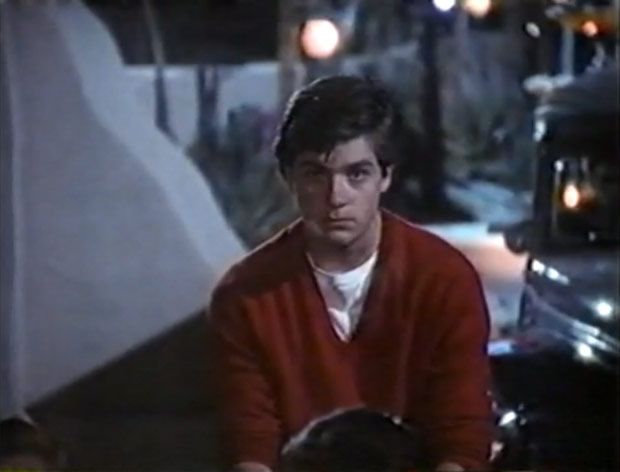
Last Monday, with the premiere of A&E’s Bates Motel, Norman Bates made his sixth screen appearance. (Not counting Gus Van Sant’s shot-for-shot remake of Alfred Hitchcock’s original.) The contemporarily set reboot is an odd stuffed owl — Vulture’s TV critic Matt Zoller called it “a critical conundrum … Bates Motel is an origin story for, or prequel to, Psycho — and yet it isn’t.” It’s not the first TV attempt to prequel-ize the Psycho story. It’s not even the first TV project to bear the name Bates Motel. Like so many successful films, the near-perfect Hitchcock horror/suspense tale has seen its main character spun off into increasingly terrible follow-ups — specifically, two theatrically released films (Psycho II and Psycho III), a failed TV pilot (Bates Motel), and one made-for-cable movie (Psycho IV: The Beginning). I went back and revisited each of them (and, in the case of that failed TV pilot, tracked it down on YouTube to watch for the first time). Here are twenty thoughts on the Psycho franchise.
1. In 1983, 23 years after the black-and-white original, Psycho II was released. Robert Bloch, author of the novel on which Hitchcock’s film was based, had written a sequel (with an amazing book jacket) in which Norman escapes an institution and heads to Hollywood: The book served as a critique of the then-prevalent genre of the slasher film. Universal, the studio which then (and now) owns the rights to Psycho, basically said, “Yeah, we’re not going to make a movie mocking ourselves,” and went in a completely different, more knife-friendly direction.
2. In the film, Norman is let out of prison and goes back to the Bates Motel to start a new life. Lila Loomis, sister of Marion Crane, the original film’s first victim, is trying to convince the local sheriff that Norman is incapable of rehabilitation. Since I ironically enjoy moments when a movie’s title is said in a line of dialogue, the part when drunk Dennis Franz (who plays the skeezy manager that took over the motel while Norman was away) screams, “Hey, psycho! Hello, psycho!” over and over again is personally amusing.
3. 1983 was right at the height of the slasher-movie craze. Three Friday the 13ths and two Halloweens had already been released, and Nightmare on Elm Street was just around the corner. So while there’s not a ton of killing in Psycho II, when it does come, it’s gory. One character gets a butcher knife right through the mouth and out the back of their head. Another gets stabbed in the chest and falls off a staircase, only to have the knife driven farther into their chest by the banister.
4. Psycho II is actually quite a fucked-up movie. Norman starts the film a free man, looking for nothing more than to do simple work at a diner and put the past behind him. He has no intention of starting to murder people again. But he is gaslighted by Lila and her daughter (played by Meg Tilly) into believing that his dead mother is very much “alive.” By movie’s end, he’s pretty much insane again. There’s no point in trying to be good, is there?
5. 1986’s Psycho III was directed by Norman Bates himself — Anthony Perkins — who clearly felt that he needed to include as many nods to the original story (and to Hitchcock) as possible. The film opens with an homage to Vertigo — a nun stands at the top of a church bell tower, about to commit suicide. Then, over the rest of the film, Norman returns to the ill-fated cabin No. 1, ends up peeping through a hole in the wall at a woman taking a bath, sends yet another car into the swamp behind his property (seriously — how many cars could possibly fit in that swamp?), repels from a bloody sight in a hotel bathroom, and yells the line “Mother. Oh God, Mother. Blood. Blood.”
6. Some critics thought that the previous sequel was also overly loyal to the original. Of Psycho II, Vincent Canby wrote in the New York Times: “The story of Psycho II isn’t as important as the way Mr. Franklin dramatizes it by recycling memorable moments from the original. At times, Psycho II seems almost to be an academic thesis. It’s stuffed with quotes from the first movie, most of them badly paraphrased but, in one case, lifted whole, being a clip from the original Hitchcock footage. As a pre-credit sequence, Psycho II uses the famous shower scene from the original movie, a sequence that is then parodied later in the picture.”
7. Psycho III picks up just a couple of weeks after Psycho II. It co-stars Jeff Fahey, who plays Duane Duke, a sleazeball wannabe rock star who ends up working at the Bates Motel. There is a moment in this film where he tries to seduce a woman by slowly moving a lamp over his naked crotch that has always stuck with me. Having seen all of the Psycho sequels as a young, sexed-up adolescent, this scene struck me as simultaneously alluring and ridiculous and creepy. It seemed to indicate that adulthood could potentially be more frightening that I had previously thought.
8. Carter Burwell, who has scored all but one of the Coen Brothers’ films, worked on the music for Psycho III. It was his second movie, after Blood Simple, and one of the tracks was made into a music video that juxtaposed footage from the third film with footage from the first. It’s mostly instrumental and completely bizarre in a very eighties way.
Burwell has the following recollection about working on the film: “At one point I got together with another young composer from a pop background. Danny Elfman had just scored Pee Wee’s Big Adventure and we talked about how one might create a pop song for Psycho III. Danny’s idea was to sample Bernard Herrmann’s string stabs from the first Psycho and use them as a rhythm bed. This time Universal nixed the idea.” Elfman would later go on to rearrange Bernard Herrmann’s original score for Gus Van Sant’s 1998 shot-for-shot remake of Psycho.
9. The second most interesting character in this franchise might be the Bates mansion. It’s clearly one of the more memorable movie homes, and there’s something darkly beautiful about it. That’s probably why each of these movies is bound to that one location — because as much as Psycho wouldn’t be Psycho without Norman, it also wouldn’t be Psycho without the Bates property, one large vertical structure rising up above a low horizontal one.

10. The Bates mansion was used sporadically in other films and TV shows over the years (see here), including the 1981 Chevy Chase comedy Modern Problems, in which the house was painted pink.
11. Bates Motel is the most random entry in the series, having aired in July 1987 as a backdoor pilot for a never-produced TV show. It starred Harold and Maude’s Bud Cort as Alex, who, as an institutionalized teenager, became close friends with Norman Bates. As the movie kicks off, Norman has died, leaving the titular motor court — now rundown and abandoned — to Alex, with the instructions that he reopen the motel and live in Norman’s old house. It’s obvious that Bates Motel is going to be terrible as soon as the opening credits begin to run. It’s an interminable static shot of the Bates mansion scored to a completely out-of-place tinkling piano theme.
12. In Bates Motel, Norman was apparently an okay guy. Alex delivers a heartfelt speech at his friend’s funeral and sleeps with an urn full of Norman’s ashes by his bed. He takes over the motel and begins to suspect that Norman’s mother may be haunting the property. It all ends with a twist that is so Scooby Doo–esque (it actually involves the ghost being revealed to be a guy in a costume) that Hanna and/or Barbera would have been well within their rights to sue.
13. I suspect that part of the reason Bates Motel failed is because the audience was asked to sympathize with a man obsessed with the memory of his dead friend, a cross-dressing murderer. Also, there is a complete lack of tonal control — it ricochets sloppily between eerie, slapstick, and earnest with no good reason.
14. Three quarters of the way through, the narrative leaves Alex to focus on the motel’s first new guest, a writer who has checked in with the intention of committing suicide. Before she can, however, a group of fifties sock-hoppers, led by the girl who played Simone Foster on Head of the Class, shows up to convince her that life is worth living. They are ghosts of teenagers from all different parts of the country and from all different times who committed suicide, and they show up at the Bates Motel to help this one writer. Because, as Cort told the AP in 1987, “There is now something magical about the [motel] that gives people a chance to reflect on their lives and go back into the world renewed.” So, had the series been picked up, it would have essentially been Fantasy Island.
15. Jason Bateman is in this movie. This is Jason Bateman in the movie.

16. 1990’s Psycho IV: The Beginning was a made-for-Showtime movie. This was way before it became the Showtime we know now; in 1990, it was still a pretty low-rent channel. As is the movie itself. Ostensibly a half-prequel, Psycho IV places Norman in a seemingly normal relationship. He lives in a very nice house with his very nice wife, a former nurse of his. (Screenwriter Joseph Stefano, who co-wrote the 1960 original, decided to ignore the events of Psycho II, Psycho III and Bates Motel.) But one night he is compelled to phone a call-in talk show and recount how he became a serial killer, a structure that forces the film to cut between static shots of Norman talking on the phone and flashbacks to a young Norman and his mother. It’s shockingly boring.
17. For some reason, Animal House/Blues Brothers director John Landis is in a barely there cameo as the radio station manager. I suspect it’s because the film was directed by Mick Garris, a horror-movie journeyman (who has also done four Stephen King adaptations, including ABC’s The Stand), and horror directors just hang out all the time. Also, Landis liked to include director cameos in his own films, so what goes around comes around.
18. Young Norman is played by Henry Thomas (E.T.’s Elliot), and his pre-stuffed mother is played by Olivia Hussey (Juliet from Zeffirelli’s Romeo and Juliet). Both are attractive people, and the script hammers us over the head with the whole incestual/Oedipal complex thing. In one scene, Norman gets into his mother’s bed to comfort her and quickly gets a hard-on; in another, he peeks through that cabin No. 1 hole in the wall to see her have sex with her boyfriend. We get it!
19. After Norman kills a young woman who has done nothing more than try to have sex with him, he puts her body in her car and dumps it into the swamp. Again, how many cars are in that swamp? So many cars.
20. This is a spoiler for the end of Psycho II, but I do love this video so. Yes, because it’s funny in its dismissiveness, but also because you can actually see real acting on Anthony Perkins’s face there, even though we’re only talking about ten seconds or so, and it’s worth remembering that while he played Norman Bates too many times, he was still a true talent. Every movie, no matter how bad, has its moments. So does every unnecessarily extended franchise.




